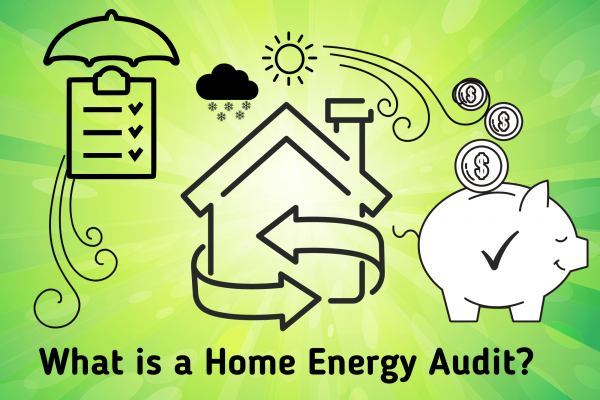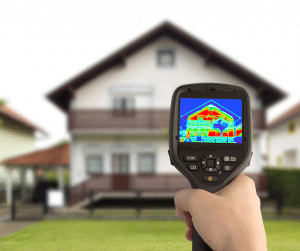
Energy Consultant-Specialist Jeff Lucky helps us understand the benefits of getting a home energy audit whether we live in a free standing home or an apartment building.
As an energy professional, I have noticed that homeowners and renters are unfamiliar with home energy audits. A home energy audit will show a variety of measures to reduce energy use and lower energy costs throughout the year, no matter whether it is keeping warm in the winter or cool in the summer.
Home energy audits are a fantastic way to gauge the amount of energy used by your household. A home energy audit will also uncover ways to reduce your energy use, which will lower your energy bill. There are a couple different options for home energy audits: you can hire a professional home energy auditor (some utilities have rebate programs) or you can do it yourself (ENERGY STAR® has a couple of programs to use). A colleague recently had a professional audit done with the help of his gas utility, with a positive outcome.
Before we get started with explaining what to expect with a professional home energy audit, let’s familiarize ourselves with some industry terms that you will likely encounter.
kWh or kilowatt-per-hour: a measurement for the amount of electricity you use in a specific period of time, in this case an hour.
Btu/hr or: a measurement for the amount of natural gas you use in a specific time, in this case an hour.
Supply charge: Simply put, this is the amount of money a utility will charge you to use a kWh of electricity. It will look something like this Rate @ .095001 or approximately 9.5 cents. Can also be identified as ‘rate charge’.
Air infiltration: Outside air leaks into the home that you are paying to keep comfortably cool (or warm). Air movement works both ways, in and out, through a process known as air exfiltration. However, air infiltration (air leaking into a building) has a greater impact on the energy demand of your home, (remember those magic words from childhood “Close the door. We’re not heating/cooling the outside!”). Through a home energy audit, you might be surprised where air is leaking into your home besides the front door.
Demand Charge: The maximum amount of energy in (kW) used during the billing cycle, it is a combination of how much electricity is used and the rate at which it is consumed. For customers whose utility rates include demand charges, those charges contribute significantly to monthly electric bills. For example, if the utility that provides your electricity charges $10.00 per kW for demand and the demand for the month was 10 kW, the demand charge that will show up on your bill is $100.
First, the home energy auditor will review with you your most recent utility bill (gas or electric) to understand how much energy you use, how much you pay for that energy, the patterns of your energy use, and when those unexpected surges of energy occur. When you ask yourself, “Whoa—what happened here? This can’t be right. I couldn’t have used all the energy they say I used!” and you begin to read over your complicated bill—the data, a pattern will appear.
Then the home energy auditor will visually inspect the interior and exterior of your home, major appliances you use and your heating and air conditioning systems. They will be looking to see if you have cracks or gaps in your doors/door framing, walls, windows, or window framing. These cracks do cause heating and cooling systems to work harder to compensate for air infiltration. Your energy auditor will look at your chimney. Has the damper been left in the open position when it should have been closed? Here is the positive outcome for my colleague, he had a crack in his foundation and an open damper. The home energy auditor discovered these problems, and he was able to find solutions
A blower door test will be conducted. Blower door tests are used to determine a home’s airtightness. ENERGY.GOV has a great page to explain how a blower door test is run.

Home energy auditors will sometimes use a thermographic inspection. A thermographic inspection, also called infrared scan, is used to identify thermal areas of heat loss or poor insulation. ENERGY.GOV has a page to explain how a thermographic inspection works at
The auditor will inspect for insulation to see if there is indeed insulation installed, to assess if there are areas where deterioration or moisture has compromised the insulation which may be an indication of ineffective barrier against air infiltration.
When your energy audit is completed, your home energy auditor will generate a report listing their findings with actionable steps you can take to reduce your energy bills. The good news is that many corrections are simple and easy to make. More complex solutions can be implemented over time. Some utilities may even offer rebates or incentives to complete energy saving projects. Check with your utility to see options.
Some people do not have access to a professional home energy audit but still want to save energy in their homes so there are several websites that will walk you through inspecting your home:
Whether having a professional home energy audit performed or going the DIY route, a home energy assessment can save both energy and dollars, while keeping you comfy.
